If you’re a board gamer and you’ve got young children, chances are that you’ve played at least one children’s game at some point in the last few years. Chances are even better that you’re like me and actually own more than your fair share of them. My kid’s game shelf has ballooned over the past couple of years with titles like Snail’s Pace Race, Animal Upon Animal Junior, Catch Me!, and First Orchard—all from HABA Games—and several other titles like Gallop! The Game, The Sneaky Snacky Squirrel, and even Blues Clues: Find-the-Clues to name a few.
While it fills me with no end of joy that my son loves playing these games with my wife and me, I’d be lying if I told you that there weren’t more than a few times that, while I rolled a chunky die to move a wooden snail down the racetrack for the millionth time, I wished I were playing something meant for my age group. Don’t get me wrong, the lenticular animals in Gallop! The Game are pretty cool, but they’re not as cool as playing Terraforming Mars: Ares Expedition would be. Yet, I gamely play on. Sometimes being a parent means putting your own wants and desires to the side and setting your brain to autopilot.
But it doesn’t have to be.
A Few Notes About Our Selection Process
There are many ‘gamer’s games’ out there that can be played with young kids, but many of those require some tweaking or dumbing down of the rules. We wanted to avoid this kind of thing. The whole idea of the games on this list is for the adults at the table to have fun actually playing the game as it’s meant to be played while the child has a different kind of fun that comes from simply being included in the process. Your child doesn’t need to understand the complexity behind what they’re doing as long as they’re having fun doing it.
We wanted to avoid games like Caverna: The Cave Farmers where the child’s decisions affect the board state for everyone else. The decisions made in those types of games are highly strategic and often critical. Instead, we went with games where the child’s decisions would have an almost negligible effect on the board state. Games where your child’s influence would be more that of a really bad player than an agent of chaos. Or, you know, a really great player. You never know. Children can be surprising.
Additionally, we wanted to avoid games where some fundamental aspect of the game would have to be altered in order to accommodate a younger audience, games that give the child enough freedom that the parents would constantly have to double-check their work, and games that introduce a few too many decision points.
We ultimately decided on games where the actual mechanics of a player’s turn are relatively simple, games that offer learning opportunities, and that aren’t already geared towards a younger audience.
So, without further ado, here we have selected for you six games for big people that you can play with your little people without having to change a single thing.
Cascadia
Cascadia is a game about building up habitats and then placing animals into those selfsame habitats. During each round, the players will be drafting a duo of a randomly selected habitat tile and a randomly selected animal token and then placing these into their tableaus.
Each habitat can only contain specific types of animals. There are many different animals in the game, of which only a few will come out in a given game, and each of them has a different scoring condition, most of them being positional in nature. For instance, the elks score more points the more of them you have in a straight line in your tableau. At the end of the game, the player who has the highest score wins.

Cascadia is a very easy game to teach. Turns go by quickly and the actual mechanics of the turn couldn’t be any easier: pick up a tile and a token and add them to your stuff. They’re so easy, in fact, that you can likely just set your child to the task of matching things together without any regard to how they actually score. Since each player is constructing their own tableau, your child’s tile/token duo selection will have very little impact on your own experiences. Educational opportunities abound. For instance, you can talk to your child about the different animals and their habitats and why each is more suited for one than the other. All these are reasons that Cascadia makes for a great entry on this list.
Check out our review of Cascadia.
Sushi Go!
Sushi Go! is a “pick and pass” card game wherein the players are trying to collect different sets of sushi cards in order to, hopefully, score more points than their opponents.
The game is played over three rounds. At the start of a round, each player is going to be dealt a hand of cards. Then, on their turn, they will select a card to keep for themselves and pass the remainder along to their opponents. This will be repeated until the players have no more cards in hand. Each card features a piece of anthropomorphic sushi along with some iconography describing how that sushi type scores at the end of the round (or the end of the game, depending on the type). For instance, Maki Rolls will score either six or three points, at the end of a round, for whoever has the most/second most of them, respectively.
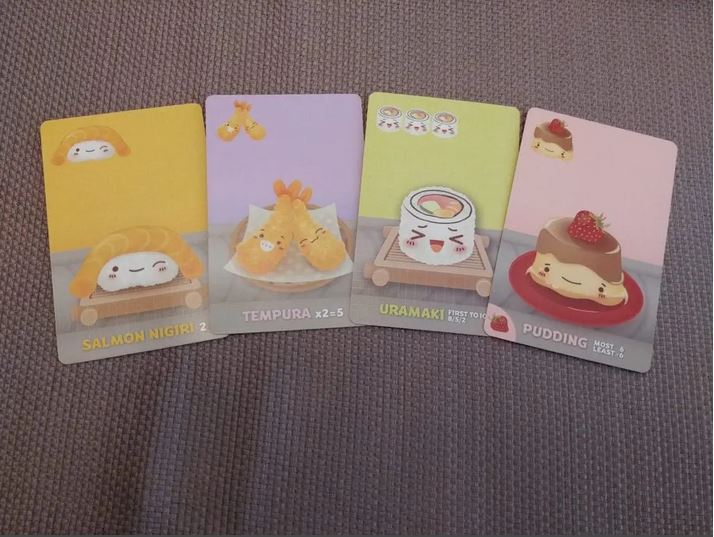
Mechanically speaking, you couldn’t find a simpler game than Sushi Go! However, despite its simple mechanics, Sushi Go! Is anything but simple. In fact, it’s downright fiendishly clever. It’ll have you sweating over which cards to keep and which to pass on. Since you’re able to see everyone else’s collection of cards at all times, it’s no secret how what you’re passing on is going to help or hinder your opponents.
It’s a great, light-hearted game for adults and the cheeky artwork makes it very approachable. This cartoony aesthetic mixed with Sushi Go!’s very simple ruleset are what landed it on this list. Your child doesn’t need to know what’s going on. They can just have fun collecting their favorite pieces of sushi. And, who knows, maybe they’ll actually win.
Check out our review of Sushi Go Party! – a souped up version of the basic game.
FYFE
Welcome to the beach. Take a walk and explore. Enjoy the feeling of the waves swirling around your toes. Marvel at the beautiful shells and other oddities that you find washed up during your travels along the sandy shore. This is the world of FYFE. In FYFE, the players are beachcombers who, having collected various odds and ends, have decided to make a game from what they have discovered.
Central to the game is a bag of tokens that each have a unique combination of a number, color, and icon. Each round, players will pass the bag around, drawing tokens from it, and then adding those tokens to their empty player boards. Along the edges of the player boards are indentations that can accommodate one of the Scoring boards from the players’ personal supplies. If their newly placed token does not already have a Scoring board pointed at it, then one is selected and placed in such a way that it points at the newly placed token. This continues round after round until every player has filled in their board.
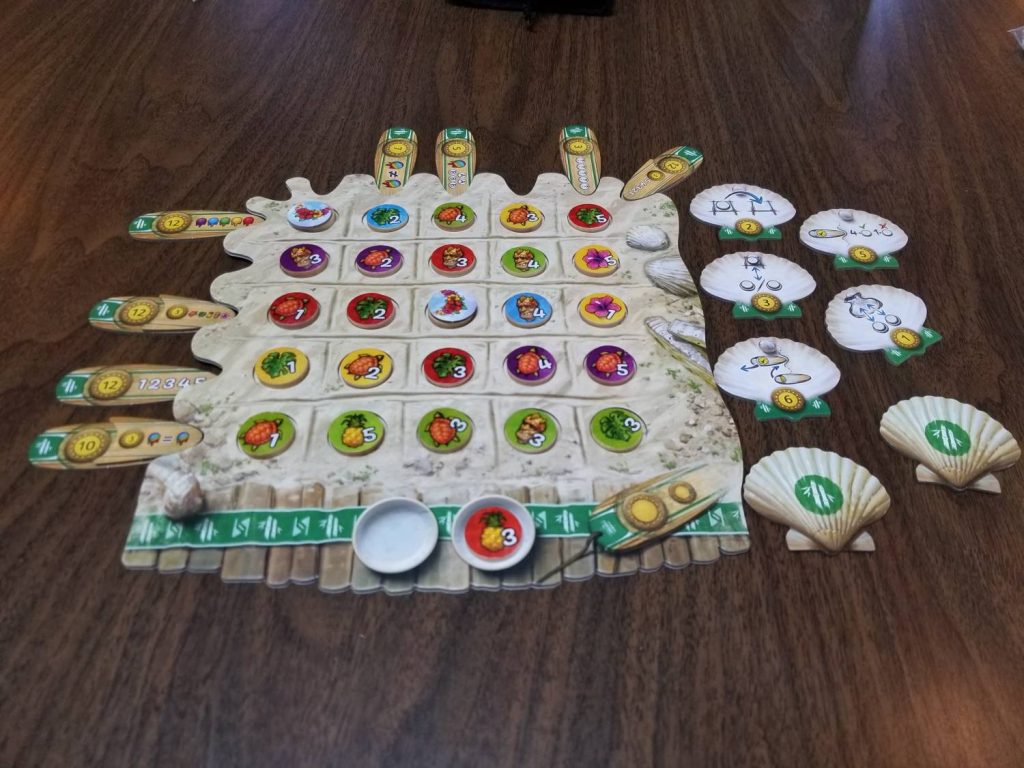
Scoring boards come in many different varieties but, in general, they will score if the player has collected a specific combination of colors, numbers, and/or items in a row or column. At the end of the game, each Scoring board is assessed. If the player has met the criteria, the board stays around and scores them points. If they do not, the board is removed. The player with the highest score wins the game.
FYFE is an attractive game that falls squarely in “abstract game” territory. It constantly challenges the players to make the best of whatever hand fate has dealt them. For the most part, they do have a large degree of control over that fate. Every time a player places a token, they’ll have two possibilities to choose from. Every time they place a token, they get to choose where on their board the token is placed. And they get to determine what the scoring criteria are and where those criteria are placed. Eventually, though, those choices become more constricted. As the holes on the player board begin to fill in, a sense of dread mixed with an equal but opposite sense of excited anticipation sets in. Thus, the challenge that FYFE provides emerges. How far do you box yourself in? More Scoring boards means more chances to score. But it also means less breathing room. It’s much easier to pull a token that’s yellow, but it’s a lot more difficult to pull one that’s yellow and also a pineapple.
While you’re busy hedging your bets on your own player board, rest easy as your child enjoys the freedom presented by the game’s simple turn structure. It doesn’t matter where they place their tokens or their Scoring boards so long as they’re having fun. You can even use this as an opportunity to talk about numbers and colors and objects. FYFE is another perfect game for this list. It’s a low-impact, easy to play game featuring bright colors, chunky wooden tokens, and a bag that you get to pass around. What’s not to love about that?
Savannah Park
Savannah Park is a clever tile-placement game in which the players are tasked with grouping as many animals of the same type together as they can in order to score as many points as possible. Each player is given a Park board that they will pre-populate with randomly placed animal tiles. On their turn, a player will select one of these tiles to move to a different location within their park, move it, and then flip it over to signify that it has been moved. And then, every other player must also move the exact same piece within their own park.
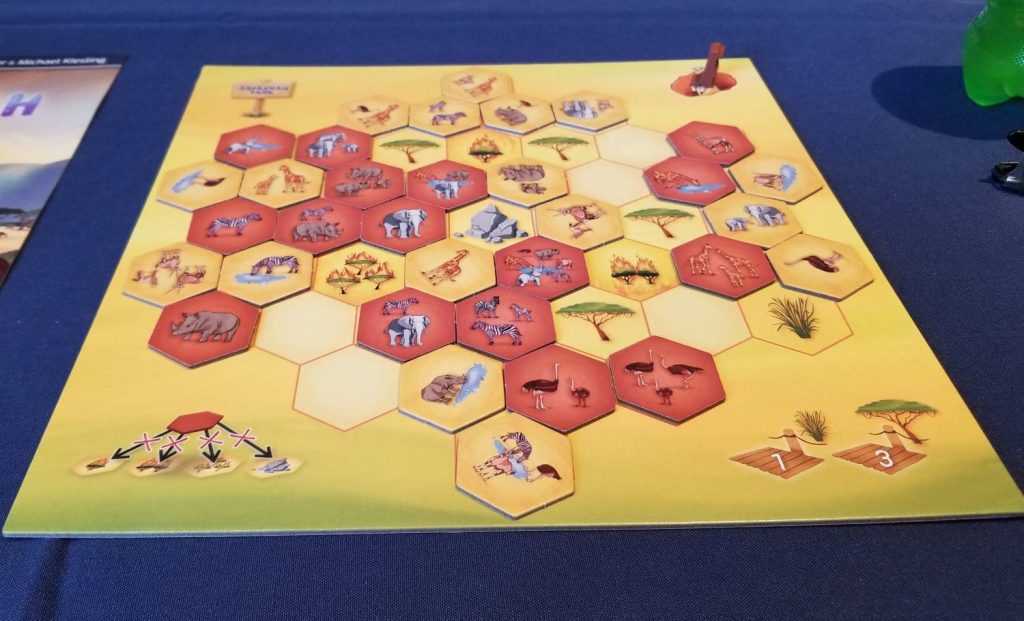
There are some tricky aspects of the game, though. Firstly, there are the bush fires. These come in three different sizes: small, medium, and large and they will eliminate various types of tokens that border them at the end of the game (single, double, and triple animal respectively). Secondly, each of the ‘grass’ spaces (of which there are six) that remain uncovered earn a point each. Empty ‘tree’ spaces are worth three each. Lastly, you only score for the largest herd of each of the six animal types, but only if that herd is connected to a watering hole. So, if your largest herd of elephants was six in size, it would be worth zero points if those elephants weren’t connected to a watering hole.
As you can see, even though the actual mechanics are very simple, the underlying strategy is not.
But that strategy isn’t going to matter to a child. As with Cascadia, as you are busy trying to arrange everything ‘just so’ to maximize your scoring opportunities, your child can just enjoy the simple act of matching things together. As an added benefit, when it comes to their turn, they even get a chance to take the reins and determine what happens next. The simple turns combined with their low impact on everyone else’s game made Savannah Park a no-brainer for this list.
Calico
Calico is a delightful game about putting together the perfect quilt. During the game, the players are going to be placing tiles from their hand onto their Quilt boards and then replenishing their hand with tiles drafted from a central market. Then the next player takes their turn. On and on it goes in this fashion until every player has filled their board with tiles, at which point scoring is performed. The winner is the player with the highest score.
Each Quilt board is divided into hexes that can accommodate the hexagonal quilt tiles. For the most part these Quilt boards are empty at the start of the game, but three of the spaces will have been pre-populated by several scoring tiles which feature different criteria such as every tile surrounding the scoring tile having a unique color and/or pattern. The better the players are able to fulfill these conditions, the more points they’ll score at the end of the game.
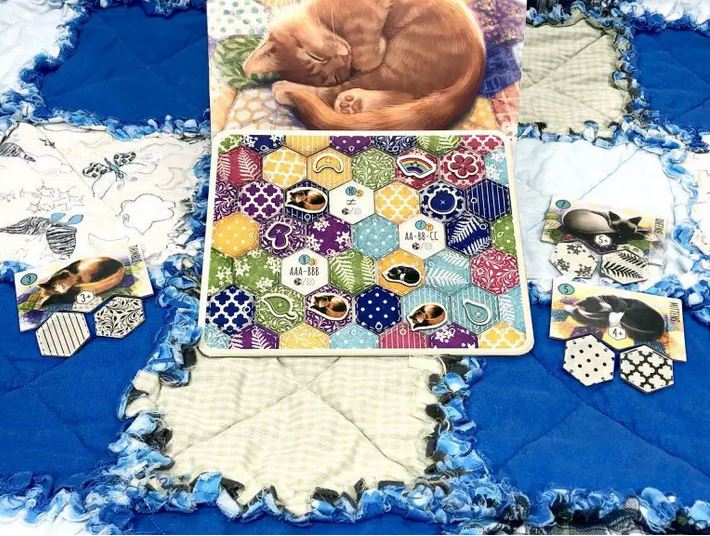
There are other ways to score points as well. In each game there will be several cats overlooking the quilting process. These cats are each attracted to particular patterns. Complete the pattern and you add the matching cat token to your quilt where it will score you points. On top of that, you can also add buttons to your quilt if you’re able to connect multiple tiles of the same color. And, you guessed it, these buttons are also worth points.
Despite its charming appearance, Calico is a complex and challenging game which will test your wits at every turn. Spatial awareness is key, but so is paying attention to what your opponents are doing. Oftentimes you’ll be faced with replenishing your hand with a tile that works well with what you’re planning or replenishing with a tile that would be of great benefit to your opponents. It is in these tense moments that Calico shines.
None of that is going to matter to your child, though. With its bright, vibrant colors and more than enough cat and button tokens to go around, they’re sure to delight in the process of simply creating a really pretty quilt. It is because of these qualities that Calico deserves its spot on this list.
Check out our review of Calico.
Ecosystem
Ecosystem is a card drafting, tableau building game that explores the interconnectedness of all things. Composed of a deck of lavishly illustrated animal cards, Ecosystem will have players selecting a card from their hand of randomly drawn cards, playing that card into their 5×4 tableau of cards, and then passing the remaining cards to their opponents. The game is played over two rounds, ten cards at a time. Once the final card has been placed, scoring is performed, and the player who has the highest score is the victor.

Sounds easy, right? Not so fast. Like Cascadia, every animal in Ecosystem scores differently. For example, some like to be close together while others prefer to be far apart. Unlike Cascadia, you’ll be playing with a full contingent of them. Also, unlike every other game on this list that gives you the freedom to place items into your personal space any way that you see fit, Ecosystem forces you to place each card orthogonally adjacent to an already existing card. This placement restriction presents an interesting challenge. Each decision you make is predicated on hedging your bets that cards you saw previously will return to you while also trying to plan for the eventuality that they do not. And all the while, you’re also trying to figure out which cards your opponents might want so that you can prevent them from getting them.
There’s a lot to consider. Unless, of course, you’re a four year old. Ecosystem is a beautifully illustrated game featuring all kinds of interesting animals. Forget about the scoring. Forget the placement rules. Just sit back and enjoy watching your child wax ecstatic about their favorite animals. Delight in the stories they tell.
Ecosystem’s simple turn structure and accessible theme make it a perfect final addition to this list.
Check out our review of Ecosystem.
If you have children and struggle to find ways to include them in your gaming experiences, we hope that this list has inspired you. Are there any games that fit the bill that you think would make good candidates? Let us know in the comments.




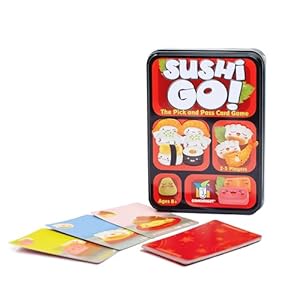





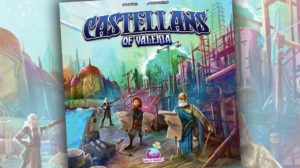
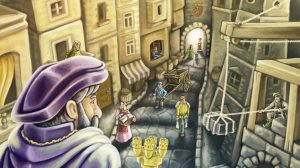
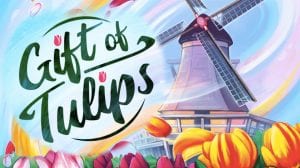




Add Comment